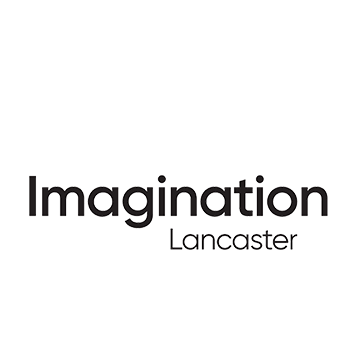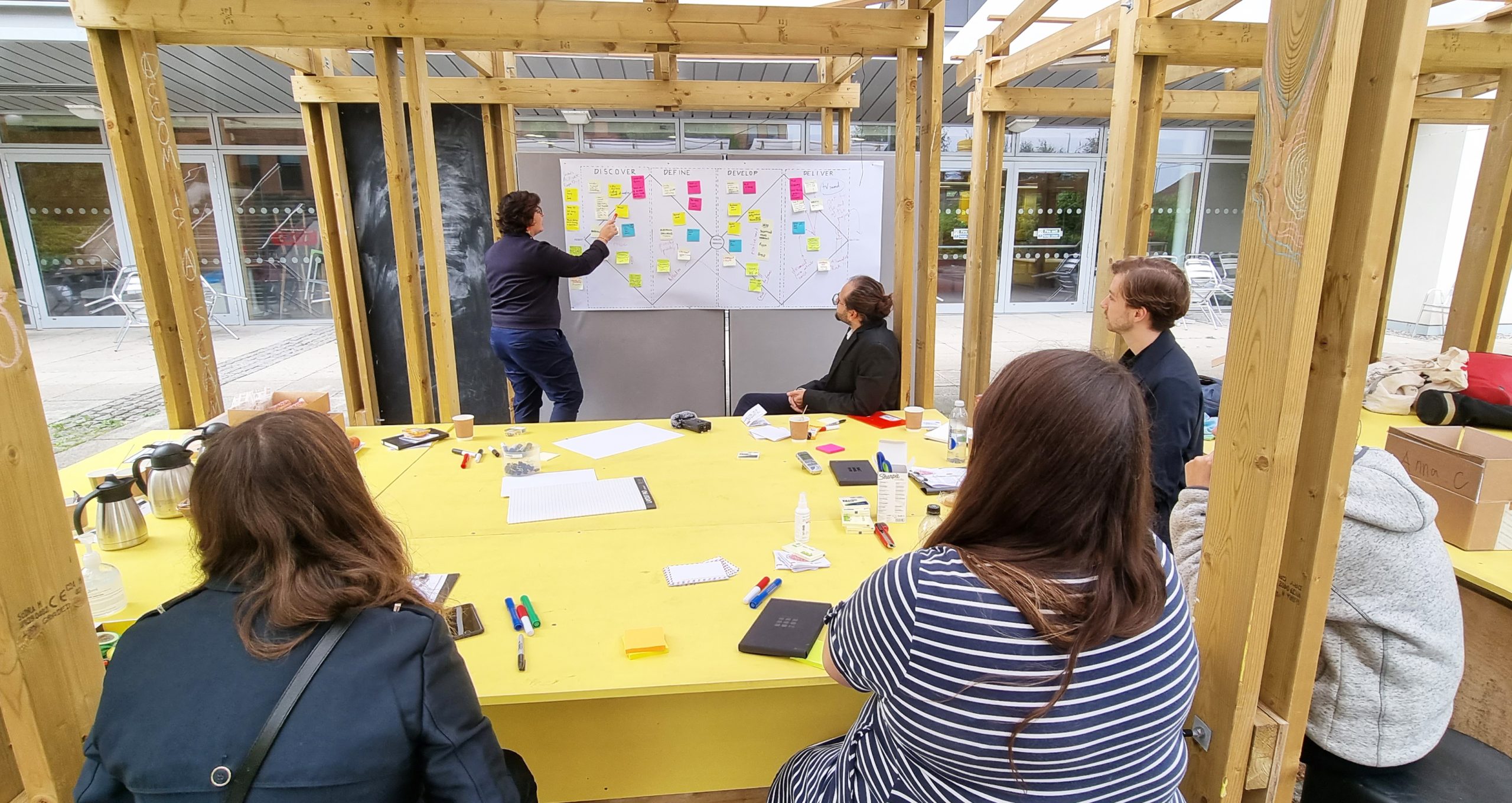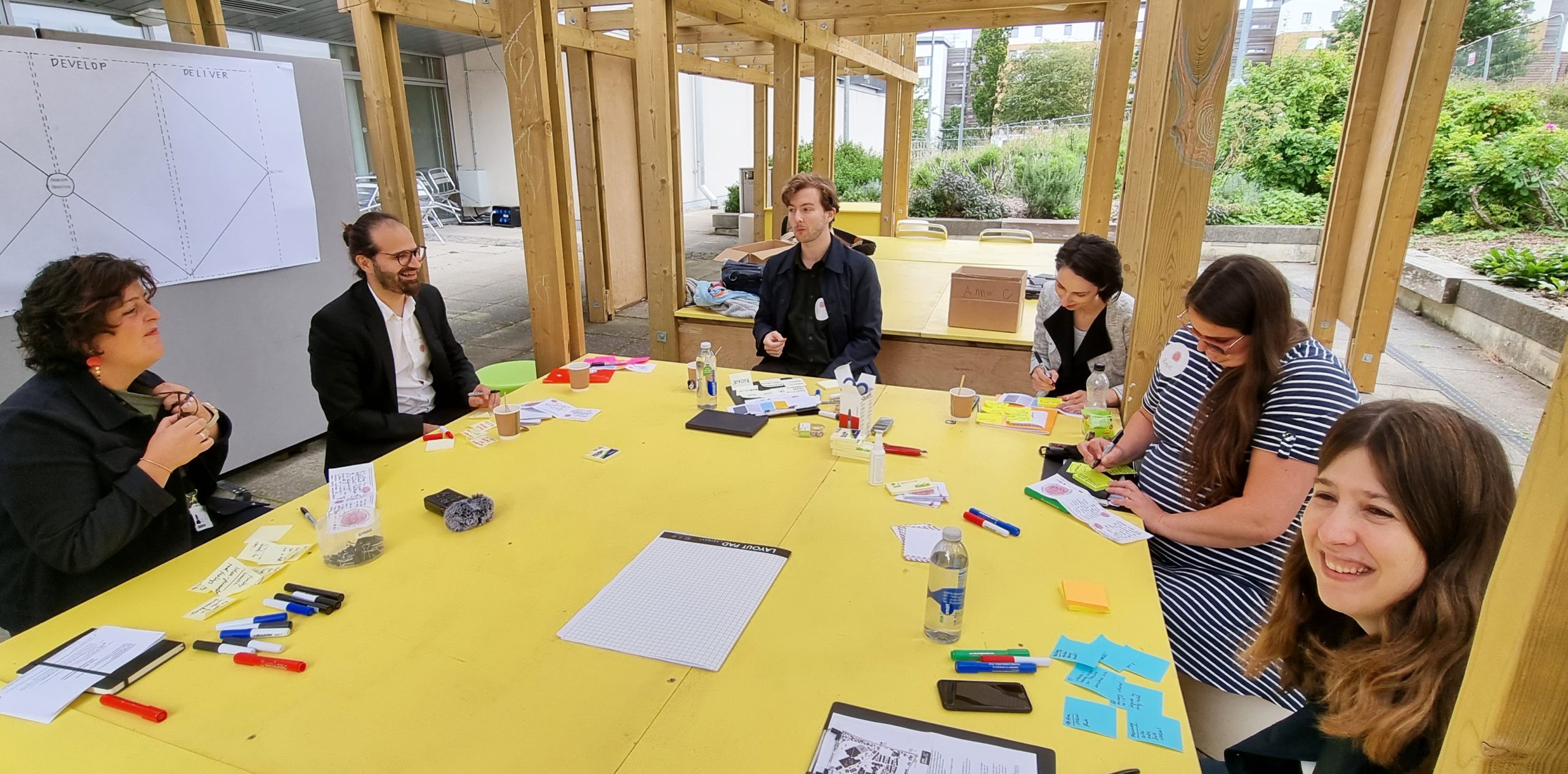The co-creation workshop consisted of two days of creative activities held at The Shed – UWE Frenchay Campus, Bristol during the 27th and 28th of August 2021. The workshop proceeded through three stages: 1) sharing and telling empathetic design experiences; 2) deepening understanding; and 3) sensemaking and co-articulation of the meaning of design empathy. Participants engaged in multi-perspectival discussions to expand their tacit knowledge about the skill of design empathy and collectively co-construct new knowledge through mutual learning. The aim was to establish collaboration ecosystems for design creativity curated by an interdisciplinary team of design researchers and participants. Together, we explored how diverse design communities of practice relate sounds and music with empathy by self-reflecting on their own experience, and learning from each other.
The workshop drew two participants from our industrial partners (HM Land Registry, and Rheon Labs), and four academic participants. Together we spent two days developing a series of creative and reflective activities tailored and facilitated towards unfolding tacit knowledge and exploring the relationship between sounds, music, and the skill of design empathy, and hence, gathering a deep understanding of the nature and role of empathy in the design process.
We began with an icebreaker, an individual reflective activity that invited participants to self-reflect and raise awareness about how they may use music or sounds in their design practices. After the icebreaker, we gathered together around a large panel with the Double Diamond design model to portray our initial thoughts emerged during activity 1 about design empathy and music and sounds. The Double Diamond was used as a visual framework to start unpicking the relationship of music and design empathy in each stage of the design process. This collective telling-sharing activity sparked interesting conversations and help set up a catalysis situation: reconfiguring participant relationships, and setting horizontal, inclusive participant relationships.
The third activity consisted of a toured walk around the grounds and surroundings of the campus to explore the sound experience of three specific spots, selected due to their sound and ambience qualities. Walking together allowed us to explore sound and environmental conditions in a more experimental way, setting an informal and relaxing atmosphere. The walk was facilitated by the research team, walking together and stopping in each spot to conduct resting moments of self-reflection, which were captured in a series of postcards. People self-organised in small groups while walking, and they began sharing emerging insights about how they were feeling through being exposed to the diverse sounds and ambience stimuli.
After the walk and a break for dinner and rest, we began the final activity of the first day. The aim of the fourth activity was to collectively reflect upon the walking experience and, being able, as a collective, to share and crystallise emerging insights and empathetic stories. Using string hanging from side to side of the shed, we began to hang the postcards written during the walk, shaping a timeline of personal stories. Each participant shared their insights. This helped the group to consider what sounds ignited specific feelings on them, or what type of memories were recalled by the environmental sounds.
We came together the following day to deepening our understanding about the nature and role of design empathy, sounds, and music in the practice of design. We explored the insights generated during the first day and collectively went through the first round of analysis and sensemaking. At the end we co-articulated our own meaning of design empathy, and map out key insights.
To finish, together we mapped the most relevant ideas. We came to the conclusion that the use of sound as a stimulus in the design process is related to the levels of engagement, according to the motivation of the designer. Verbal interactions (conversations) implied high levels of engagement, then music with marked and fast rhythms like rock or metal music, then, structured melodies (if possible, without lyrics), and on the other side of the spectrum we found background sounds (including background music and ambient sounds e.g., coffee shop noise).
We wrapped up the workshop with lunch and the research team thanked the participants for all their hard work and time shared to make possible this workshop. This would not be possible without all of their kindness and open-minded approach to exploring in what ways design empathy and sound could be articulated towards artificial empathy.





